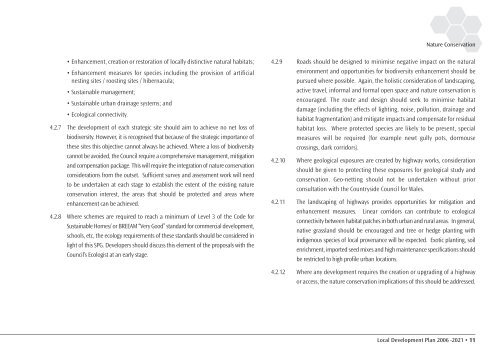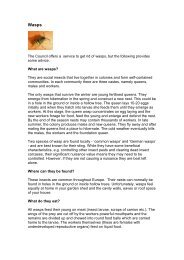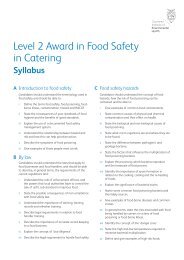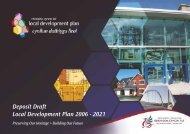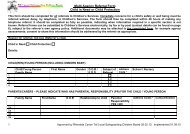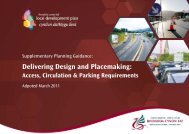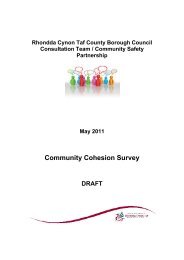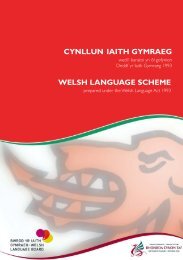LDP nature conservation 2011_Layout 1 - Rhondda Cynon Taf
LDP nature conservation 2011_Layout 1 - Rhondda Cynon Taf
LDP nature conservation 2011_Layout 1 - Rhondda Cynon Taf
- No tags were found...
Create successful ePaper yourself
Turn your PDF publications into a flip-book with our unique Google optimized e-Paper software.
Nature Conservation• Enhancement, creation or restoration of locally distinctive natural habitats;• Enhancement measures for species including the provision of artificialnesting sites / roosting sites / hibernacula;• Sustainable management;• Sustainable urban drainage systems; and• Ecological connectivity.4.2.7 The development of each strategic site should aim to achieve no net loss ofbiodiversity. However, it is recognised that because of the strategic importance ofthese sites this objective cannot always be achieved. Where a loss of biodiversitycannot be avoided, the Council require a comprehensive management, mitigationand compensation package. This will require the integration of <strong>nature</strong> <strong>conservation</strong>considerations from the outset. Sufficient survey and assessment work will needto be undertaken at each stage to establish the extent of the existing <strong>nature</strong><strong>conservation</strong> interest, the areas that should be protected and areas whereenhancement can be achieved.4.2.8 Where schemes are required to reach a minimum of Level 3 of the Code forSustainable Homes/ or BREEAM “Very Good” standard for commercial development,schools, etc, the ecology requirements of these standards should be considered inlight of this SPG. Developers should discuss this element of the proposals with theCouncil’s Ecologist at an early stage.4.2.9 Roads should be designed to minimise negative impact on the naturalenvironment and opportunities for biodiversity enhancement should bepursued where possible. Again, the holistic consideration of landscaping,active travel, informal and formal open space and <strong>nature</strong> <strong>conservation</strong> isencouraged. The route and design should seek to minimise habitatdamage (including the effects of lighting, noise, pollution, drainage andhabitat fragmentation) and mitigate impacts and compensate for residualhabitat loss. Where protected species are likely to be present, specialmeasures will be required (for example newt gully pots, dormousecrossings, dark corridors).4.2.10 Where geological exposures are created by highway works, considerationshould be given to protecting these exposures for geological study and<strong>conservation</strong>. Geo-netting should not be undertaken without priorconsultation with the Countryside Council for Wales.4.2.11 The landscaping of highways provides opportunities for mitigation andenhancement measures. Linear corridors can contribute to ecologicalconnectivity between habitat patches in both urban and rural areas. In general,native grassland should be encouraged and tree or hedge planting withindigenous species of local provenance will be expected. Exotic planting, soilenrichment, imported seed mixes and high maintenance specifications shouldbe restricted to high profile urban locations.4.2.12 Where any development requires the creation or upgrading of a highwayor access, the <strong>nature</strong> <strong>conservation</strong> implications of this should be addressed.Local Development Plan 2006 -2021 • 11


